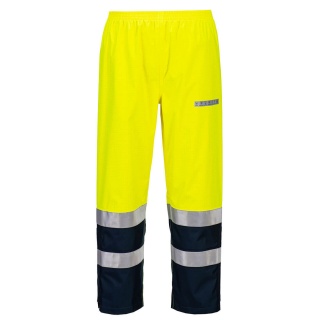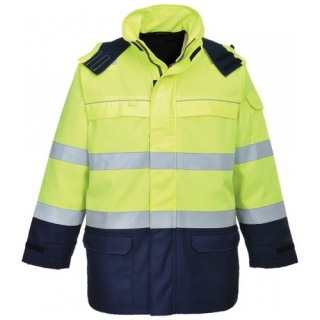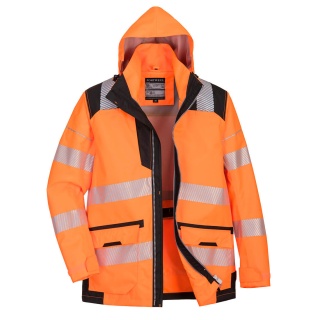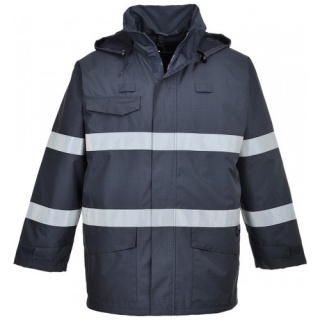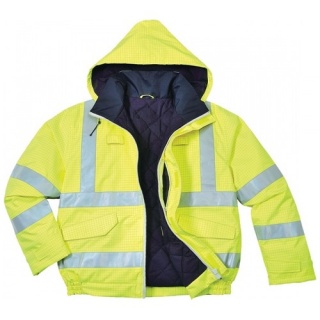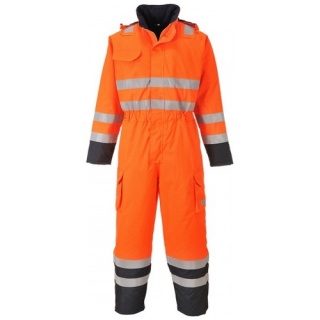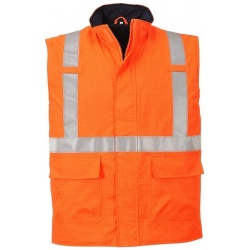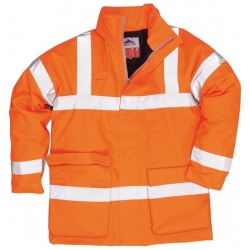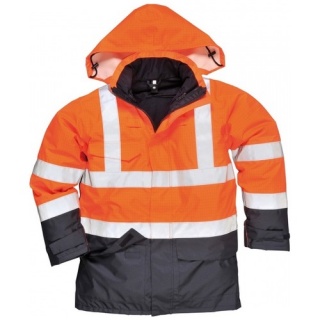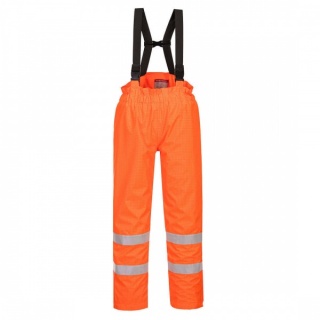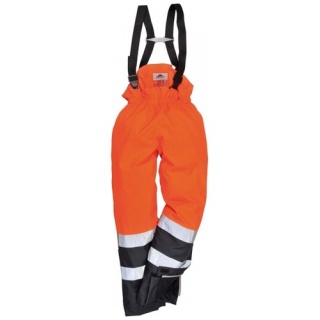Fabric Information:
Bizflame Rain Fabric combines a 98% Polyester and 2% anti-static carbon fibre 250g, this breathable fabric offers maximum protection to a range of International Standards.
Features:
- CE certified
- Flame resistant treated waterproof fabric prevents water penetration
- Chemical resistant
- Anti-static
- FR cotton lined for added warmth and comfort
- Breathable fabric to draw moisture away from the body keeping the wearer cool
- dry and comfortable
- Taped seams to provide additional protection
- Premium flame resistant reflective tape
- Two-way zip for quick and easy access
- Hood for added protection against the elements
- Concealed phone pocket
- Radio loop for easy clipping of a radio
- Pack away hood for added functionality
- Internal chest pocket
- Knitted cuff for comfort and warmth
- Lightweight and comfortable
- New Style
Fabric Specifications:
- Outer: Bizflame Rain 250g
- Lining: 100% Cotton Flame Resistant Lining 170g
Product Technical Information
EN ISO 14116: 2008
Protective Clothing Against Limited Flame Spread Materials and Material Aseemblies
This standard specifies the performance requirements for the limited flame spread properties of materials, material assemblies and protective clothing in order to reduce the possibility of the clothing burning and thereby itself constituting a hazard. Additional requirements for clothing are also specified.
Protective clothing complying with this standard is intended to protect workers against occasional and brief contact with small igniting flames in circumstances where there is no significant flame hazard and without the presence of another type of heat.
EN1149 -5
Protective Clothing against the Thermal Hazards of an Electric Arc
This European Standard is part of a series of standards for test methods and requirements for electrostatic properties of protective clothing. The standard specifies material and design requirements for garments used as part of a total earthed system, to avoid incendiary discharges. The requirements may not be sufficient in oxygen enriched flammable atmospheres. This standard is not applicable for protection against mains voltages.
EN 1149 consists of the following parts:
EN 1149-1: Test Method for measurement of surface resistivty.
EN 1149-2: Test Method for measurement of the electrical resistance through a material (Vertical resistance)
EN 1149-3: Test Methods for measurement of charge decay.
EN 1149-4: Garment Test (under development)
EN 1149-5: Material Performance and design requirements.
Electrostatics dissipative protective clothing shall be able to permanently cover all non-complying materials during normal use. Conductives parts (Zips, Buttons etc) are permitted provided they are cover by the outermost material when in use.
EN 13034:2005
Protective Clothing Against Liquid Chemicals
Performance requirements for chemical protective clothing offering limited protective performance against liquid chemicals (Type 6 and Type PB [6] equipment). This stamdard specifies the minimum requirements for limiter use and re-useable limited performance chemical protective clothing. Limited performance chemical protective clothing is intended for use in cases of a potential exposure to a light spray, liquid aerosols or low pressure, low volume splashes, against which a complete liquid permeation barrier (at a molecular level) is not required.
The Standard covers both chemical protective suits (Type 6) and partial body protection (Type PB [6]).
Type 6 suits are tested using a mist or fine spray of water with a dye added to aid the assessment of leakage. The test subject wears an absorbent suit underneath the one to be tested, which absorbs any leaks and is stained by the dye.
Success or failure is determined by measuring the total area of any stains on three suits and comparing this with the requirement. A range of other tests is specified, including resistance to abrasion, tear strength, tensile strength, resistance to puncture, resistance to ignition, resistance to penetration by liquid chemicals and seam strength. In the test for liquid chemical repellency and resistance to penetration by liquid chemicals, a bank of four test chemicals is given in the standard although the requirement is that the suit material demonstrates adequate repellency and resistance to penetration against one chemical from the list.
EN ISO 20471
This International Standard Specifies requirements for high visibility clothing, which is capable of visually signalling the user’s presence. The high visibility clothing is intended to provide conspicuity of the wearer in any light condition when viewed by the operators of vehicles or other mechanised equipment during daylight conditions and under illumination of headlights in the dark.
High Visibility clothing has a fluorescent surface, combined with reflective material that meets certification requirements in 3 different classes:
Class 3: Highest Level
Highest Level of protection – required for any persons working on or near motorways/dual carriageways or airports. Must incorporate a minimum of 0.80m sq of background materials and 0.20m sq of retro-reflective materials. (4 metres of 5cm wide reflective tape)
Class 2 – Intermediate level
Required for any person working on or near A and B Roads, also for delivery drivers. Must incorporate a minimum of 0.50m sq of background material and 0.13m sq of retro-reflective material. (2.60 metres of 5cm wide reflective tape)
Class 1: Minimum level
Minimum level of protection required for any persons working on a private road or to be sed in conjunction with a higher classed garment. Must incorporate a minimum of 0.14m sq of background material and 0.10m sq of retro-reflective material. (2 metres of 5cm wide reflective tape)
EN 343 – Protective Clothing, Protection Against Rain
EN 343 is the harmonised European standard that applies to garments worn in adverse weather conditions. It specifies the characteristics of protective clothing against the influence of foul weather, wind and coll above –5 Degrees. The standard provides for two parameters: (Example - Class 3:1)
X (3) = Waterproofness (3 Levels) 3 is the highest
Y = (1) Breathable Properties (3 Levels) 3 is the highest
